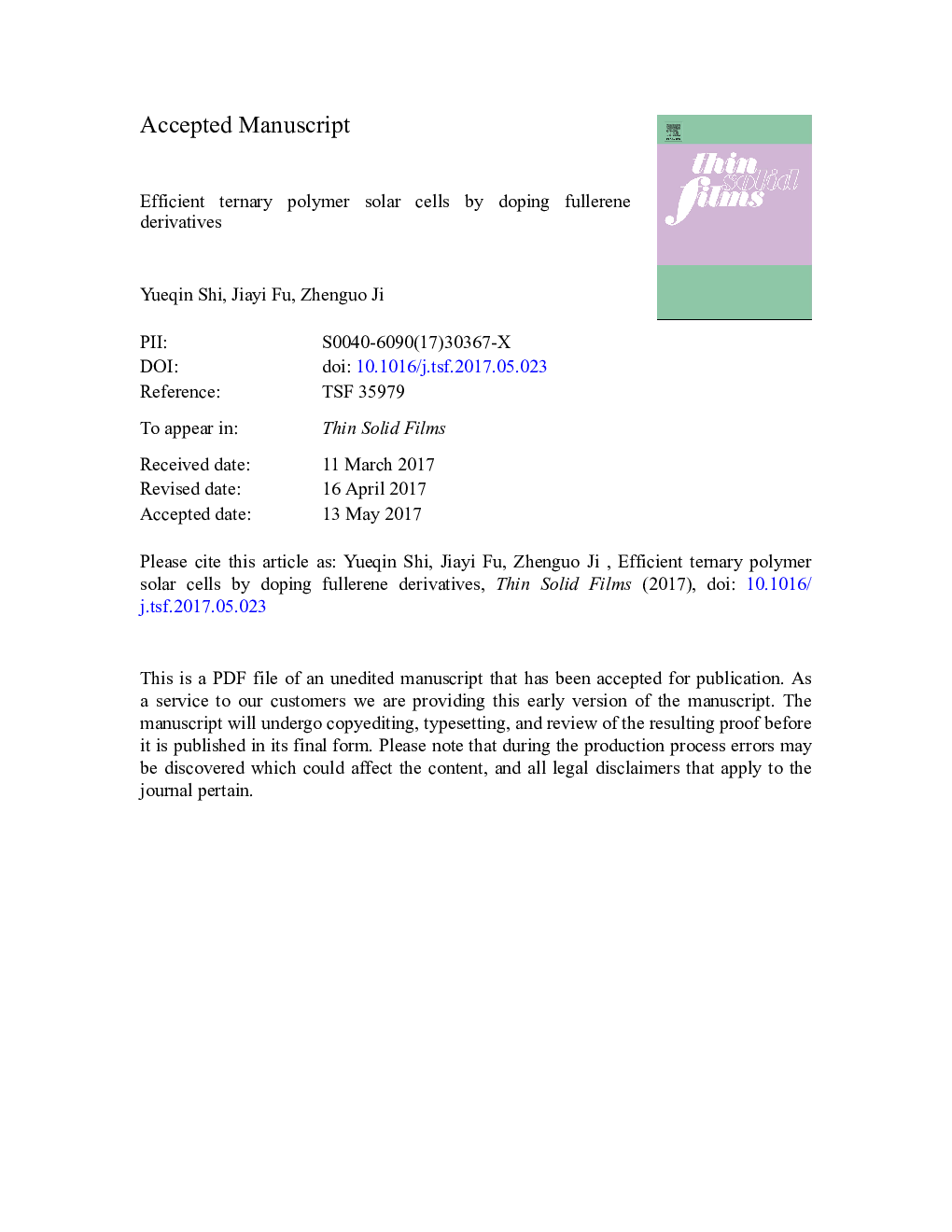| Article ID | Journal | Published Year | Pages | File Type |
|---|---|---|---|---|
| 5466060 | Thin Solid Films | 2017 | 28 Pages |
Abstract
Here, indene-C60 bisadduct (ICBA) was incorporated into poly[4,8-bis(5-(2-ethylhexyl)thiophen-2-yl)benzo[1,2-b:4,5-bâ²]dithiophene-co-3-fluorothieno[3,4-b]thiophene-2-carboxylate]: [6,6]-phenyl-C71-butyric acid-methyl-ester (PTB7-Th:PC71BM) as active layer to fabricate the ternary polymer solar cells (PSCs). The introduction of cascade acceptor ICBA was benefit for energy level alignment and improving interface between polymer donor and fullerene derivatives acceptor while inheriting the major benefit of PTB7-Th and PC71BM, broad and strong absorption and high electron mobility. In the ternary PSCs, the weight ratio of PTB7-Th:fullerene derivatives acceptor was 1:1.5, of which the weight percentage of ICBA in this fullerene derivatives acceptors varied from 0Â wt% to 100Â wt%. Introducing around 10Â wt% ICBA as fullerene derivatives acceptor, the best power conversion efficiency (PCE) was achieved, accompanied by moderated open-circuit voltage (Voc), and maximized short-circuit current (Jsc) and fill factor (FF). Incorporating 10Â wt% ICBA into PTB7-Th:PC71BM could improve the polymer's spectral absorption intensity and its miscibility with fullerene derivatives acceptor, and enhance the charge transfer from donor to acceptor. Finally, efficiency over 9.2% had been obtained in the simple solar cells based on PTB7-Th:ICBA (10%):PC71BM film.
Related Topics
Physical Sciences and Engineering
Materials Science
Nanotechnology
Authors
Yueqin Shi, Jiayi Fu, Zhenguo Ji,
